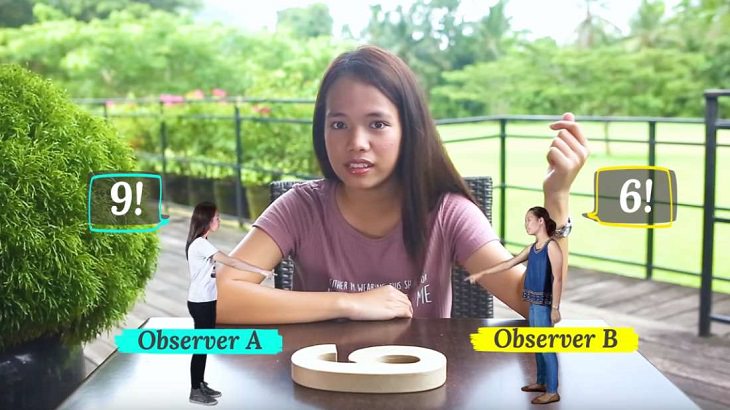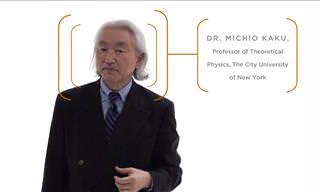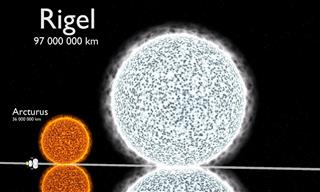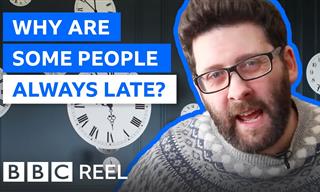

In fact, Hiliary Diane Andales recently explained part of Einstein's theories of relativity in a short video clip below. For her efforts she has won, the highly-coveted 2017 Breakthrough Junior Challenge, which earned her $400,000 in education-related prize money, including $250,000 in scholarship funds.
Sometimes dubbed the Oscars of Science, this Breakthrough Prize aims to award those who work in the field of physics, life sciences and mathematics. It was founded back in 2012 and was co-founded and sponsored by a range of entrepreneurs across the globe, including Mark Zuckerberg, founder of social media app, Facebook.
In the Breakthrough Junior Challenge, young people across the planet are asked to come up with creative, science-themed videos aimed at stirring people's imagination.
A press release also revealed that Andales entered a 2016 competition, winning the popular public vote. While she hadn't won the top prize back then, this year, Andales rose above the 11,000 other competitors. In addition to her prize, her victory will also award $50,000 to the science teacher who originally inspired her.
In her video, she focuses on a famously difficult scientific topic, one that even the top science communicators out there struggle to explain to non-scientists. Using a particularly eloquent narrative, accompanied with some animations, she explains that time isn't uniform for everyone; instead, it depends on your frame of reference, which denotes how you perceive the universe, depending on where you are observing it from.
She starts off her explanation with sound waves, where she quickly and effortlessly leaps into how time is perceived depending on where the observer is. However, to find out exactly how this works, we suggest watching this inspirational video in which she explains the theory in further detail. In her explanation, Andales is capable of telling a very complex story in a very succinct way. It's, therefore, no surprise that she won this year's prize.
 9:58
9:58
Would You Live On the Moon? Discover the Possibilities...
Did you know that the human race actually has the cash and resources available to start building a base on the moon today? Find out more here.
 4:42
4:42
Take a Trip in a Flight Simulator Worth $13 Million
What's it like to be trained inside an expensive flight simulator? Watch this video and find out!
 4:55
4:55
This Video Will Teach You About the Causes of Heartburn
Heartburn is a problem for many of us, but what actually causes it, and how can it be treated? Find out in this informative video.
 42:14
42:14
Physicist Michio Kaku: The Universe in a Nutshell...
Physicist Michio Kaku explains the fundamental nature of our universe
 4:33
4:33
When is Erectile Dysfunction a Symptom of Something More?
Erectile dysfunction is often thought of just in terms of being a sexual problem, but it could be a symptom of something much more serious. Learn more.
 3:29
3:29
Discover How These Flying Dinosaurs Ruled the Skies!
This video will teach you all about the fascinating flying dinosaurs known as pterosaurs!
 2:23
2:23
Introducing the Astronauts That Were Just Launched Into Space
The two astronauts — veteran NASA fliers Bob Behnken and Doug Hurley are honored to have been on this flight. Let's get to know them!
 3:26
3:26
The McGurk Effect - Don't Believe Your Eyes!
What we hear can be affected by what we see...

Ancient Skull Found In China Unlike Any Human Ever Seen
A newly-discovered skull in China had baffled scientists. This could mean we might have discovered an entirely new species of humans.

Here Are the 16 Oldest Household Objects in the World
If you think ancient life is remote, these pre-historic household items will make you think again. Just look at how old they are!
 5:03
5:03
WHY is Sugar So Devilishy Addictive?
There seems to be a fascinating scientific explanation for why our will power is weak when it comes to sugar!
 9:39
9:39
Science Lesson: How Does Laser Tattoo Removal Work?
How laser removal of tattoos actually works. These guys are going to find out and explain it to us.
 13:00
13:00
Visual Illusions: What Color Are These Strawberries?
Tricking our brain into believing that something is one color or shape than another thing is surprisingly easy, but can we explain why?
 5:07
5:07
The Magical Geometry of Crystals and How It Came to Be
How and why crystals are formed in such distinctive shapes that look like a human must have shaped them.

12 Earliest Versions of Tech Inventions We Use Every Day
Witness the evolution of 11 popular devices we use all the time by looking at how they all started...
 26:43
26:43
These 20 Tech Inventions Will Define the Next Decade
The future is here. Check out some emerging technologies that are all set to chane our world forever.

When Under a Microscope, Even Ordinary Things Seem Alien
Have you ever given any thought to what every day things look like under a microscope? Some of these images are truly beautiful - see for yourself in the images below.
 5:08
5:08
Experience the True Scale of Heavenly Bodies
Witness the true scale of planets, stars and galaxies in this incredible video that sheds light on size in our universe.
 4:13
4:13
What Does Medicine ACTUALLY Do In the Body? Fascinating.
What really happens in our bodies when we take medicine, have you ever wondered? This video will answer your question.
 16:55
16:55
Sleep Inventions: 16 Gadgets to Help You Doze Off
If you frequently struggle with sleep, then trying these amazing new sleep innovations could help change your life.
 4:19
4:19
The First Robot Ever Made Was Created 250 Years Ago...
This automaton is pure genius, especially when you consider it was built 250 years ago...

I Never Knew These Stunning Facts About Our Universe
If you thought you understood the universe, you'll be completely floored by this insane facts.

These Optical Illusions Will Shock Your Mind!
Optical illusions create miscommunication between our eyes and brain making, us see things that are not really there or not see things that are right in front of us. See for yourself.
 12:22
12:22
These Experiments Remind Us Water Isn't Just For Drinking
This video will make you stop and think for a second the next time you're having a glass of water as you remember the brightly colored experiments that this video shows us you can do with water
 6:33
6:33
The Story of the Internet: Who REALLY Invented It?
Who really invented the internet, and why did they REALLY do it?
 6:31
6:31
The Psychology Behind Why Some People Are Habitually Late
Now we finally know why some people are habitually late.

Wonder Why Time Speeds Up As You Age? Here's the Answer
We all get the sensation that time moves faster as we get older, but there are scientific reasons for that. Read on to learn about this fascinating phenomenon.
 33:50
33:50
The Future is in Our Hands - Next Generation Technology
These young brilliant minds grind hard at finding and creating solution to waste recycling, and the results are promising.

17 Incredible Eye Facts You Have To See To Believe
They say the eyes are the window to the soul, and they also happen to be our windows to the world. Here are 17 insanely fascinating facts about eyes.
 13:55
13:55
The Disappearing Computer: Revolution on a Personal Scale
What happens when we lose the physical large computer all together? This lecture explains what ahead for computers.
 2:48
2:48
Revealed! This Is How Far We Have Sent Crafts into Space!
Ever wondered just how far humans have sent spacecrafts into space? If the answer is yes, then this video is just what you've been looking for.

You Won't Believe That These Things Exist in Japan...
If there's one place on this planet that well and truly at the forefront of modern technology, it has got to be Japan, as these inventions prove...
 9:31
9:31
The Channel Tunnel - The 7th Wonder of the Modern World!
The construction of the Channel Tunnel is said to be an impossible feat!

20 Amazingly Simple Inventions That Make Life Easier
Some wonderful inventions can fix some of the most annoying little problems that bug us every single day. Here are 20 of the most inventive ideas I've ever seen that I can't believe no one has invented before.

10 Fascinating Facts About the Subconscious Mind
10 facts about the way the subconscious mind works

First US Embryo to be 'Edited'; Rise of Genetic Changes!
Could the first human embryos be genetically modified?

Scientists Develop Wrap That Determines if Food is Spoiled
Scientists at MIT have developed a biodegradable plastic-like wrap that changes color when food goes bad. Find out more…

12 Mind-Blowing Archaeological Discoveries Of 2022
Archaeologists made some remarkable discoveries in 2022. Here is a look at the most fascinating ones.

Satisfy Your Curiosity About the Universe with These Q&As
Discover more about the universe by reading through these facts.

10 Real-Life Technologies That Science Fiction Foretold
Sometimes even the wildest science-fiction predictions about the future come true.

GUIDE: How Alcohol Affects Us, Drink by Drink...
In this article, we're going to discuss the exact amounts of alcohol in our blood and what they look like, including how each level affects us and our ability to function.

These Are the Miracles That Happen in Our Bodies Every Day
There is a lot that happens inside our bodies every single day. Did you know any of these facts?

11 Technologies to Potentially Achieving Immortality
Scientists are hard at work developing technologies that could extend our lifespans and even make us immortal. Here are 11 of them.
 5:50
5:50
Scientists Finally Know Why We Love Cute Things
We find some things to be irresistibly cute. But why? Let’s find out.
 4:51
4:51
The Oldest Medicines That Have Stood the Test of Time
Learn about some fascinating old medicine and general healing practices that have survived for thousands of years.

Doctors Make History With First Whole Eye Transplant
Surgeons in New York have performed the world’s first transplant of an entire human eye!

5 Puzzling Mysteries That Science Finally Managed to Solve
These weird occurrences have puzzled humanity for decades, if not centuries. Finally, scientists solved them & the solutions are exciting...


